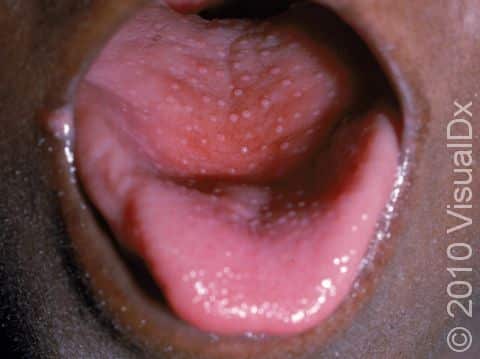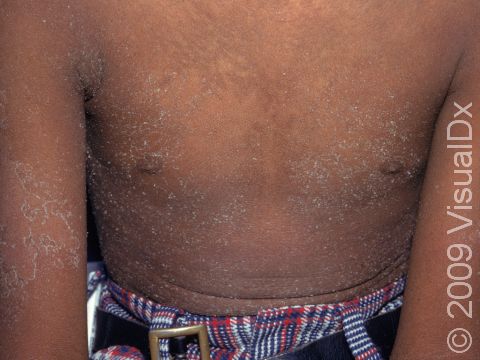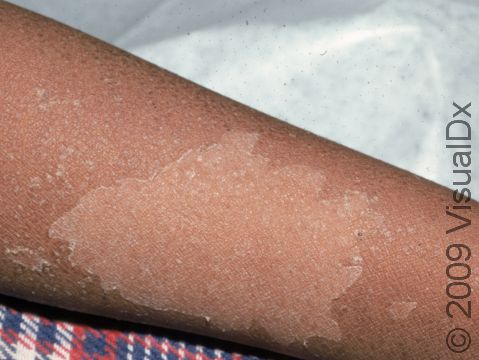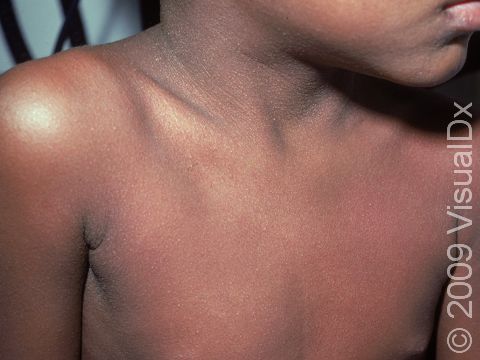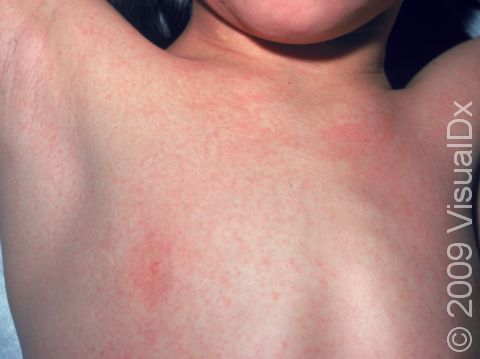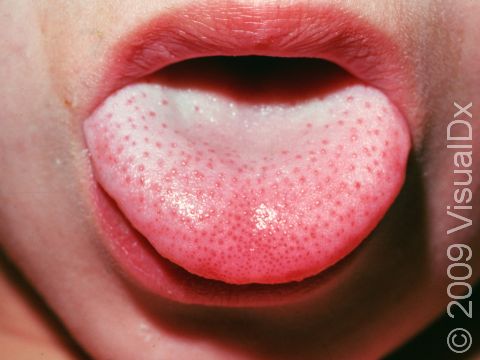Scarlet Fever
Scarlet fever is an infection with a type of bacteria called Streptococcus, which not only causes a throat infection (“strep throat”), but also produces a poison (toxin) causing the distinctive rash of scarlet fever. Some people are more sensitive to the toxin than others, so not everyone in a family who is infected will have the rash, even if they have the throat infection. Sometimes the area of infection is the skin rather than the throat, a condition called impetigo.
Scarlet fever is contagious to people who come into close contact with an infected child.
Complications are rare but can include deeper tissue infections, rheumatic fever, and kidney disease.
Who's At Risk?
- Scarlet fever is rare in children under the age of 2, because substances from the mother’s immune system (antibodies) protect the child up to that age.
- The peak ages for infection are 4–8 years. By age 10, most children have developed their own immunity to the toxin.
- Because infection is spread by fluids from the airways (respiratory secretions), infection rates are higher in crowded situations.
Signs & Symptoms
Scarlet fever is accompanied by a sandpaper-like rash of 1–2 mm red bumps, which merge together, starting on the neck, then moving to the trunk, and finally to the arms and legs (extremities). It is sometimes a bit itchy. If scarlet fever develops on body creases (armpits, elbow folds), red streaks may appear.
Fever, chills, body aches, nausea, vomiting, and loss of appetite may occur.
When the throat is the main area of infection, the tonsils may become enlarged, red, and tender. Other areas (lymph nodes) in the neck may become swollen. At first, the tongue has a white coating, giving a “white strawberry” tongue appearance, which then falls off (sheds) to reveal a bright red strawberry tongue. The rash does not affect the palms and soles at first, but later on, these areas may peel. The rash usually lasts for 4–5 days, and as it fades (subsides), skin on the neck and face start to peel, and eventually the hands and feet start to peel as well.
Self-Care Guidelines
It is difficult to avoid infection of others who are not immune in the household. However, you might try to:
- Keep eating and clothing items used by an ill child away from other people, and wash them in hot soapy water.
- The child’s caregivers should wash their hands frequently.
- Keep the child comfortable with acetaminophen (Tylenol®) or ibuprofen for fever relief.
- Have your child eat soft foods, drink plenty of liquids, and apply lotions such as calamine for itching, if needed.
Treatments
The doctor will usually do a throat or skin culture or a rapid-strep test to confirm the diagnosis. If Streptococcus infection is confirmed, prescription antibiotics are will be prescribed, to be taken for about 10 days.
Visit Urgency
Call your child’s doctor if you suspect that the child may have scarlet fever.
References
Bolognia, Jean L., ed. Dermatology, pp.1119-1120. New York: Mosby, 2003.
Freedberg, Irwin M., ed. Fitzpatrick’s Dermatology in General Medicine. 6th ed. pp.1871-1873. New York: McGraw-Hill, 2003.
Last modified on October 10th, 2022 at 8:03 pm

Not sure what to look for?
Try our new Rash and Skin Condition Finder
